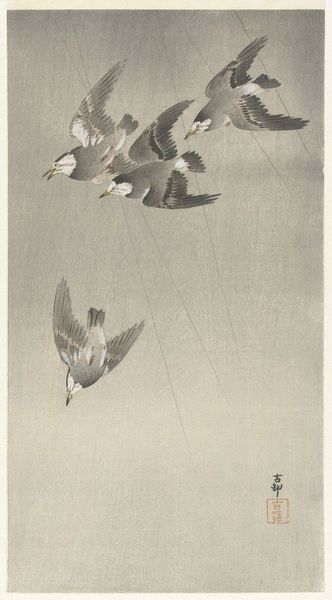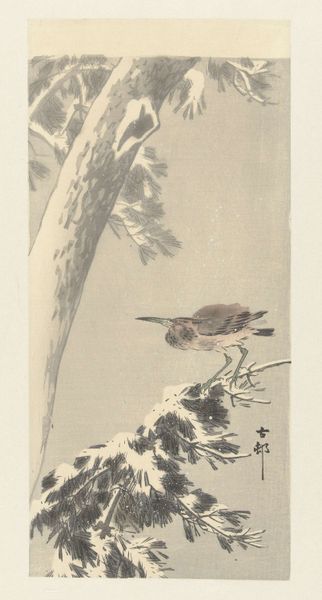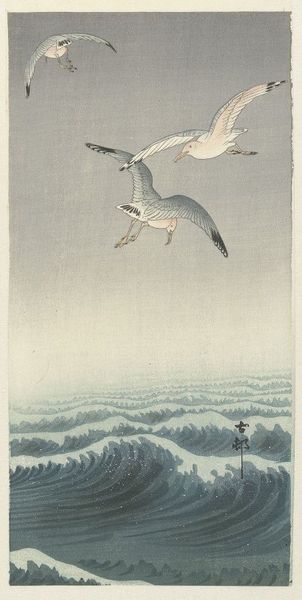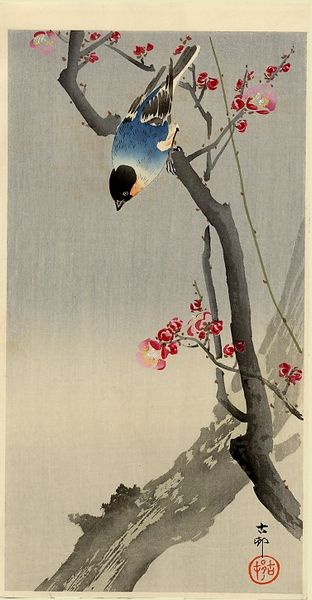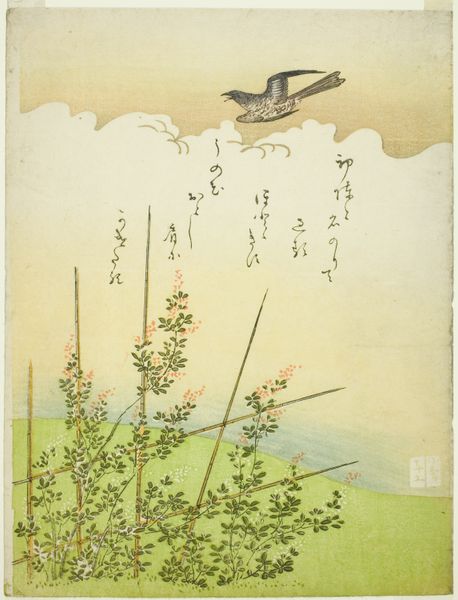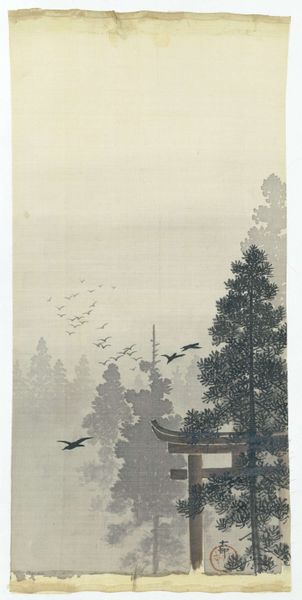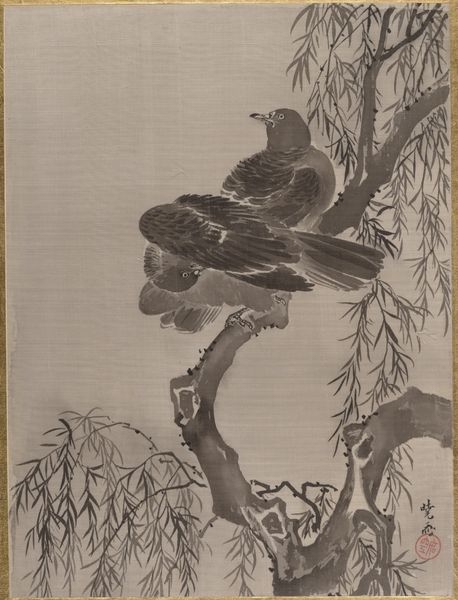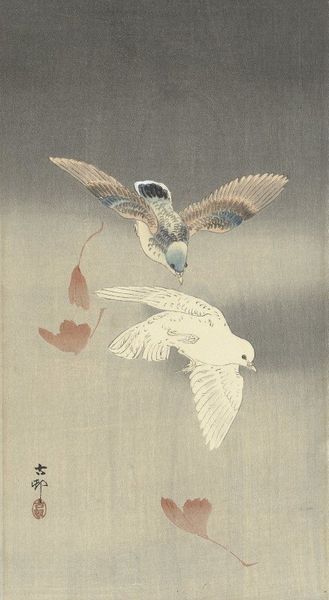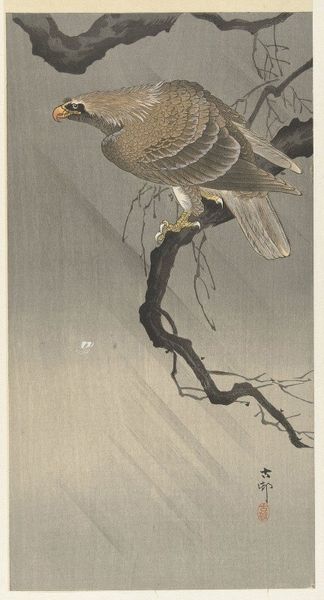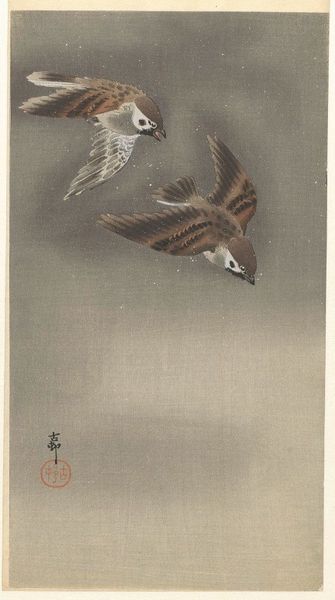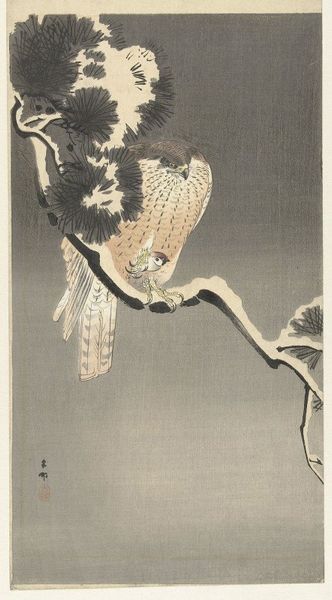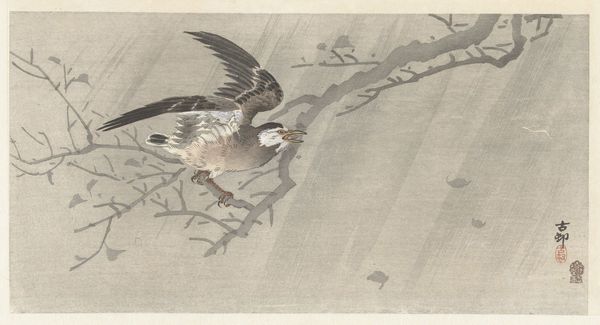
print, woodblock-print
#
tree
# print
#
asian-art
#
landscape
#
bird
#
flower
#
ukiyo-e
#
woodblock-print
#
plant
Copyright: Public domain
Curator: Let's explore this captivating woodblock print, "Stonechat," attributed to Ohara Koson. The subdued palette immediately strikes me. Editor: Yes, a feeling of tranquil observation. There's a hushed quality here, as if capturing a fleeting moment in nature, perhaps early morning, before the world fully awakens. What do you find most striking formally? Curator: The composition is meticulously structured. Notice how the verticality of the blossoming tree is counterbalanced by the horizontal branch on which the stonechat perches. It’s all carefully calibrated. There’s a tension and harmony at play in how positive and negative space articulate against one another. The delicate outlines of the flora lend to its overall airy texture, no? Editor: Absolutely. The Ukiyo-e tradition often served as propaganda for the ruling class, illustrating ideals and control. With the stonechat rendered so meticulously, it mirrors themes of delicate balance within rigid social structures. Are we looking at nature, or rather a carefully rendered performance *of* nature? Curator: Well, that's a question with which artists engaging Japonisme often grappled. This embrace of naturalism and these nature studies were also driven by burgeoning scientific awareness during the period. Observe, also, the exquisite detail in the bird’s plumage, achieved through skillful carving and printing techniques. Koson truly understood the craft of depicting the natural world. Editor: Craft, certainly, and it can also be read as a romanticizing lens through which Japanese art and culture have often been interpreted. This idyllic scene, rendered in print form, made it accessible for broader consumption but did it perpetuate orientalist perspectives for Western audiences at the expense of more authentic expression and political views? Curator: I’m reticent to view aesthetic achievement through purely political constraints. Let’s observe that without a sense of compositional elegance, formal refinement, and appreciation for its medium, this sociopolitical narrative falls flat. Editor: Fair enough. Perhaps we can appreciate both its beauty and its historical placement. There's a world outside the image and we must bring those considerations to it. Curator: Indeed. Ultimately, this print serves as a bridge – a subtle encounter where Japanese and Western visual cultures intertwine through skillful aesthetics.
Comments
No comments
Be the first to comment and join the conversation on the ultimate creative platform.
